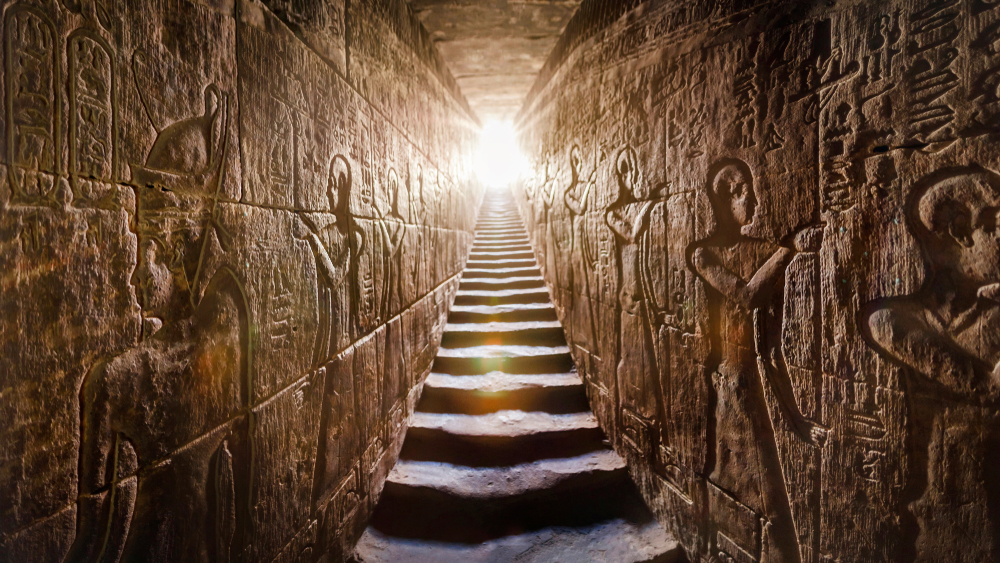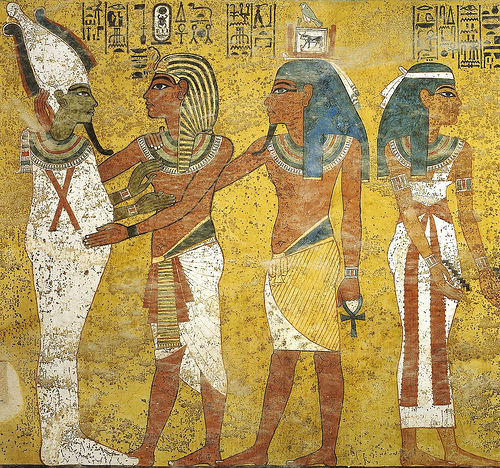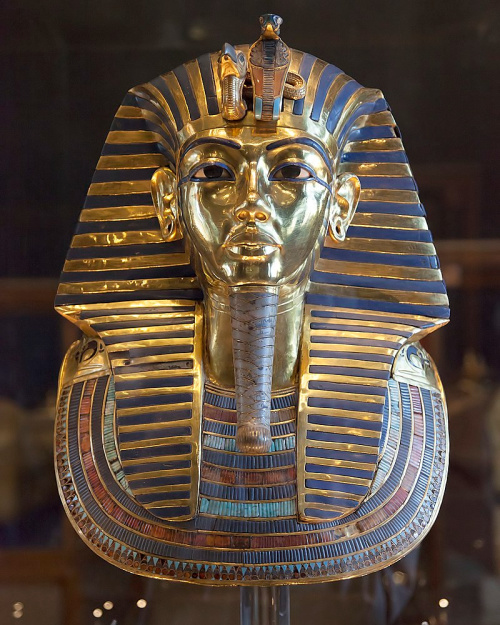Ancient Egyptian art
Ancient Egyptian art
Ancient Egyptian art
-
Hannah
-
Hannah

Temple of Edfu, Aswan
Art was taken very seriously in Ancient Egypt. It had a purpose; it was not about beauty and expression, but about creating permanent relics of great importance for religion and the pharaohs.
Artists learned on the job as apprentices, and their training was long and rigorous. Artwork for monuments was created by teams comprising a master craftsman, plasterers, stone masons, outline scribes, sculptors and specialist artists. No single artist was celebrated for a work; they operated collaboratively, working in a grid formation to tackle one part of the work at a time. Tombs were painted by lamplight – in Tutankhamun’s tomb, soot from lamps is visible on the ceiling.
Ancient Egyptian art was wonderfully colourful, and in many cases the colours have survived for thousands of years. Red and yellow paint were made from ochre. Blue was made from azurite and green from malachite. White came from gypsum or calcium sulphate, and black from soot or charcoal. Paints were expensive, and so reserved for important art.

Wall painting from the tomb of Tutankhamun
Art for the Egyptians was not about reflecting life realistically; it was a way to inform the viewer about a person or event. The artist depicted an object from a particular angle, without attention to perspective or the third dimension. As a result, people are depicted in a way no body can actually bend, much of the body in profile, with the feet pointing the same way, and the torso facing forwards.
Chronology wasn’t important; scenes were presented in any order. The scenes were horizontal in what’s called a register (like a comic book strip), each one divided with a base line. Along with these were large figures, often gods or pharaohs. The larger the figure, the greater their importance.
The figures in Egyptian art were depicted as young and vigorous. Ethnicity was denoted by skin colour and attire:
- Egyptian men had red-brown skin and women were painted yellow. They wore white clothing.
- Nubians were dark brown or black with short black hair, and wore animal-skin loincloths and gold earrings.
- Syrians had yellow skin and dark hair to the shoulder with a headband on the forehead. They wore white tunics with red trim.
- Libyans often had light skin and red hair in an intricate style, and they wore woollen cloaks.
Along with painted reliefs, statues were important – not art for art’s sake, but as a way to honour the person on which the statue was based. It was believed that a statue was a vessel for the spirit, so that the person could take part in rituals and ceremonies on the site.

Statue of Queen Hatshepsut, Luxor
Statues were carved from limestone, red granite, quartzite, alabaster, cedar, sycamore and copper, some of which were imported. The depiction of the person in the statue indicated their importance: a high priest, for example, was bald and wore a leopard-skin cloak, and a scribe sat cross-legged on the floor.
Other materials used in works of art include faience, glass, metals, wood, turquoise and lapis lazuli. Both faience and lapis lazuli lend dazzling colour to the golden funerary mask of Tutankhamun.

Of course, hieroglyphs were also an important element of art: pictures to represent letters, sounds, objects and ideas. I will devote my next article to this aspect of Ancient Egyptian art.
Photo credits: akimov konstantin/Shutterstock.com; 2) Soloman Witts/source; 3) mareandmare/Shutterstock.com; 4) Roland Unger/source